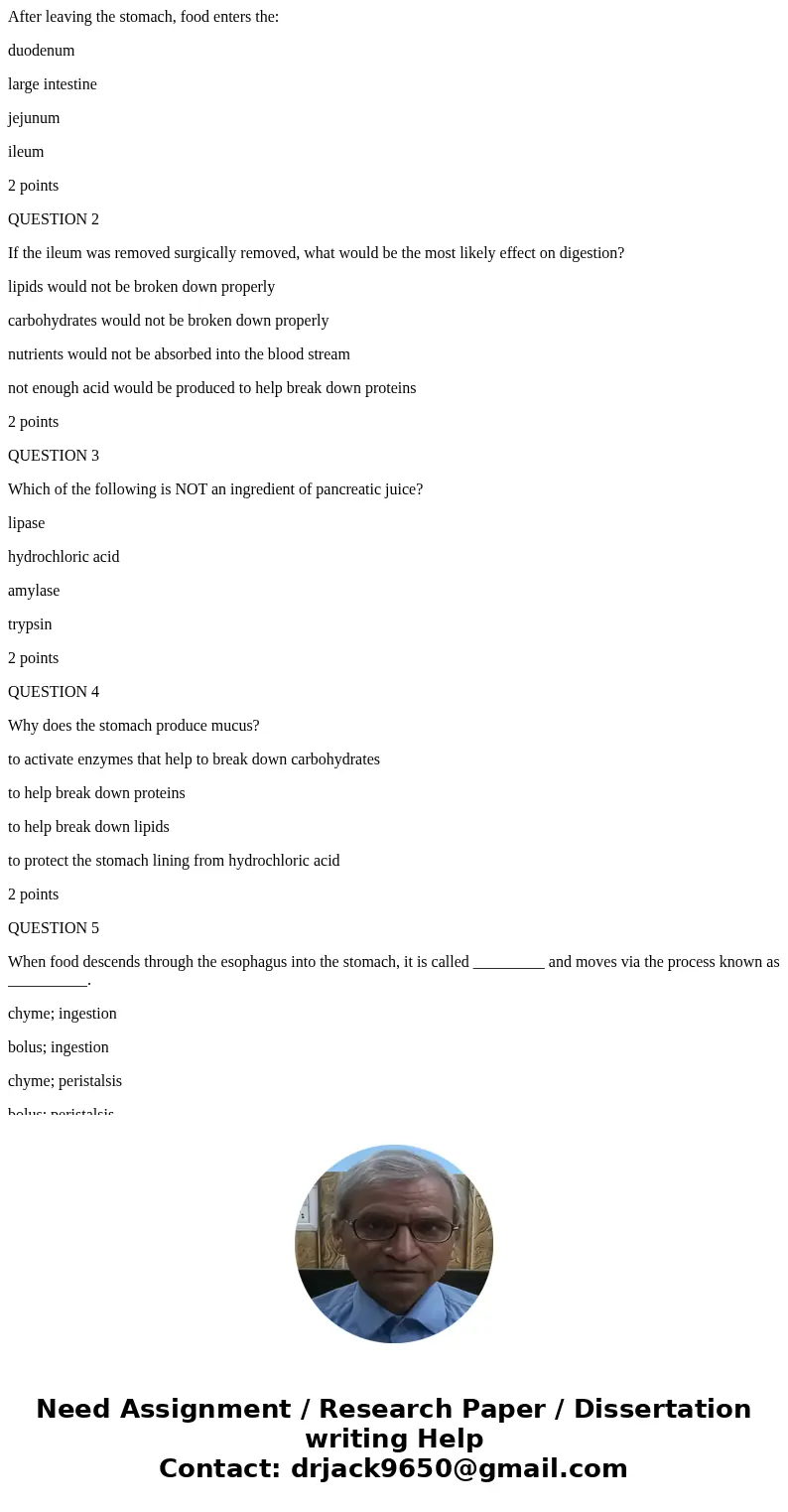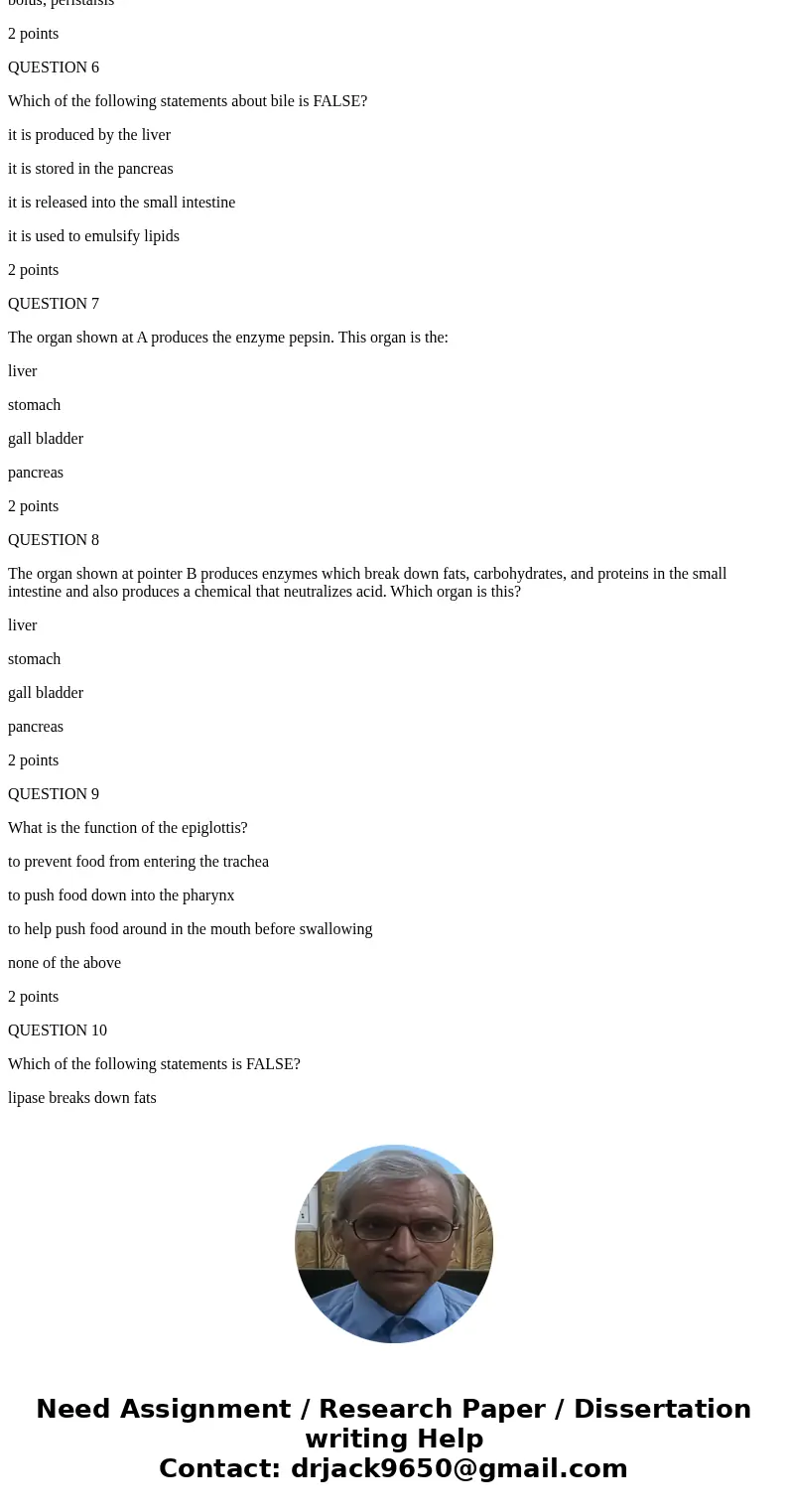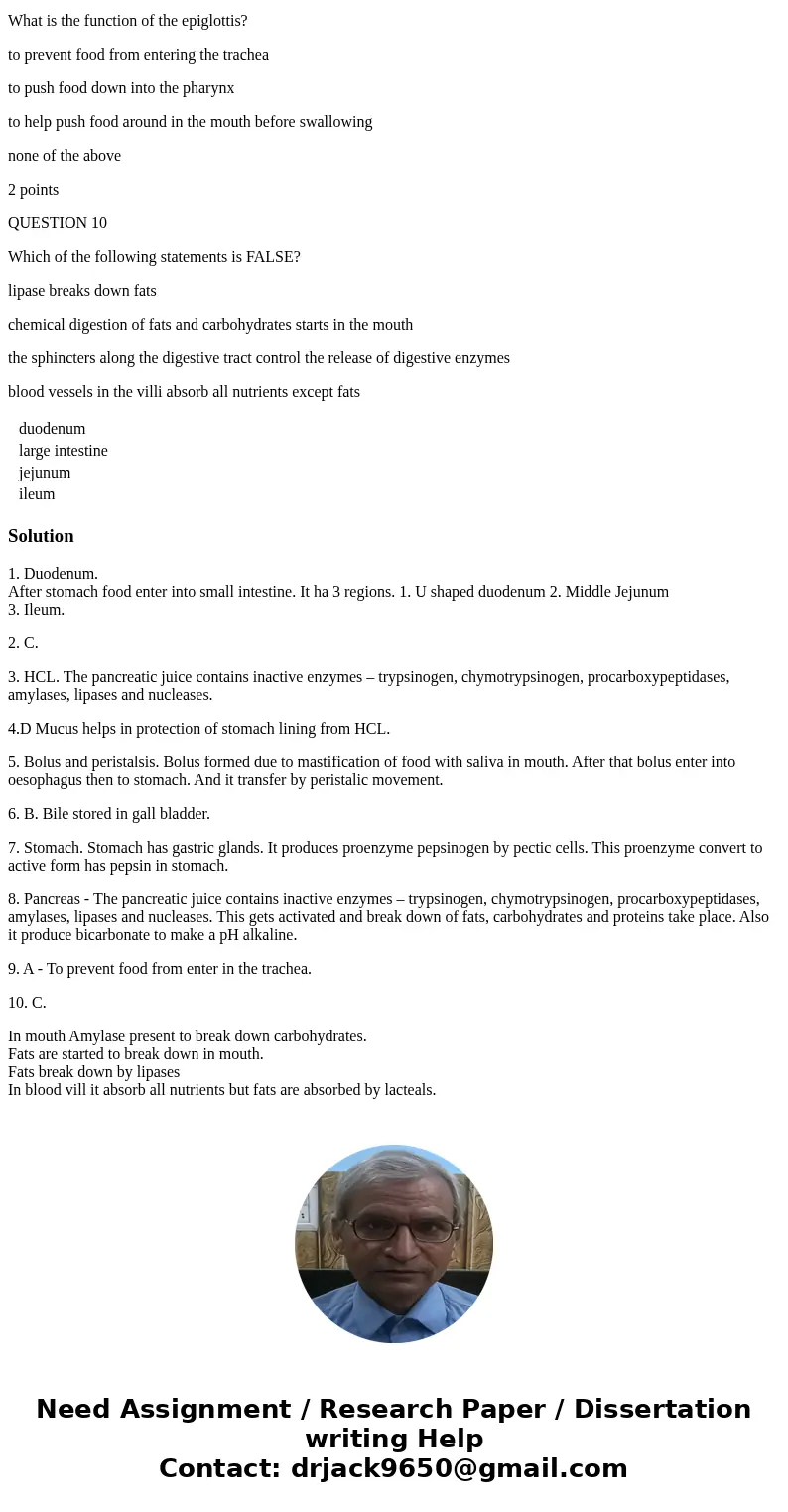After leaving the stomach food enters the duodenum large int
After leaving the stomach, food enters the:
duodenum
large intestine
jejunum
ileum
2 points
QUESTION 2
If the ileum was removed surgically removed, what would be the most likely effect on digestion?
lipids would not be broken down properly
carbohydrates would not be broken down properly
nutrients would not be absorbed into the blood stream
not enough acid would be produced to help break down proteins
2 points
QUESTION 3
Which of the following is NOT an ingredient of pancreatic juice?
lipase
hydrochloric acid
amylase
trypsin
2 points
QUESTION 4
Why does the stomach produce mucus?
to activate enzymes that help to break down carbohydrates
to help break down proteins
to help break down lipids
to protect the stomach lining from hydrochloric acid
2 points
QUESTION 5
When food descends through the esophagus into the stomach, it is called _________ and moves via the process known as __________.
chyme; ingestion
bolus; ingestion
chyme; peristalsis
bolus; peristalsis
2 points
QUESTION 6
Which of the following statements about bile is FALSE?
it is produced by the liver
it is stored in the pancreas
it is released into the small intestine
it is used to emulsify lipids
2 points
QUESTION 7
The organ shown at A produces the enzyme pepsin. This organ is the:
liver
stomach
gall bladder
pancreas
2 points
QUESTION 8
The organ shown at pointer B produces enzymes which break down fats, carbohydrates, and proteins in the small intestine and also produces a chemical that neutralizes acid. Which organ is this?
liver
stomach
gall bladder
pancreas
2 points
QUESTION 9
What is the function of the epiglottis?
to prevent food from entering the trachea
to push food down into the pharynx
to help push food around in the mouth before swallowing
none of the above
2 points
QUESTION 10
Which of the following statements is FALSE?
lipase breaks down fats
chemical digestion of fats and carbohydrates starts in the mouth
the sphincters along the digestive tract control the release of digestive enzymes
blood vessels in the villi absorb all nutrients except fats
| duodenum | ||
| large intestine | ||
| jejunum | ||
| ileum |
Solution
1. Duodenum.
After stomach food enter into small intestine. It ha 3 regions. 1. U shaped duodenum 2. Middle Jejunum
3. Ileum.
2. C.
3. HCL. The pancreatic juice contains inactive enzymes – trypsinogen, chymotrypsinogen, procarboxypeptidases, amylases, lipases and nucleases.
4.D Mucus helps in protection of stomach lining from HCL.
5. Bolus and peristalsis. Bolus formed due to mastification of food with saliva in mouth. After that bolus enter into oesophagus then to stomach. And it transfer by peristalic movement.
6. B. Bile stored in gall bladder.
7. Stomach. Stomach has gastric glands. It produces proenzyme pepsinogen by pectic cells. This proenzyme convert to active form has pepsin in stomach.
8. Pancreas - The pancreatic juice contains inactive enzymes – trypsinogen, chymotrypsinogen, procarboxypeptidases, amylases, lipases and nucleases. This gets activated and break down of fats, carbohydrates and proteins take place. Also it produce bicarbonate to make a pH alkaline.
9. A - To prevent food from enter in the trachea.
10. C.
In mouth Amylase present to break down carbohydrates.
Fats are started to break down in mouth.
Fats break down by lipases
In blood vill it absorb all nutrients but fats are absorbed by lacteals.



 Homework Sourse
Homework Sourse